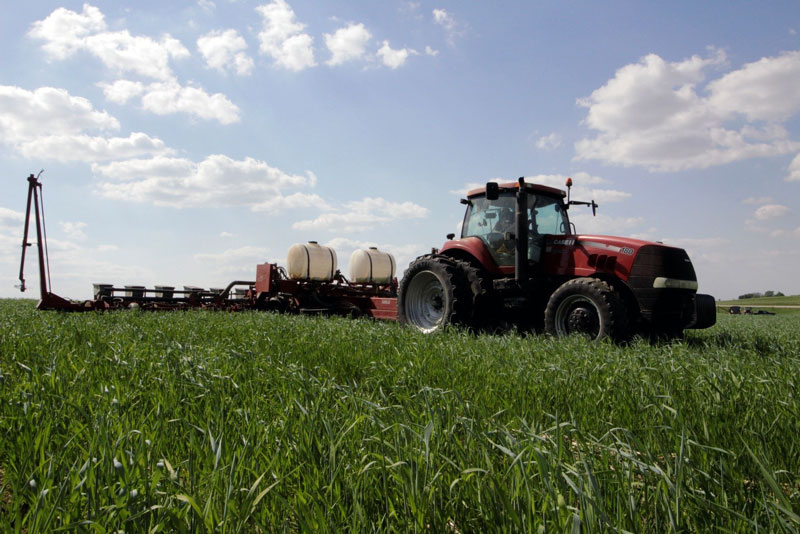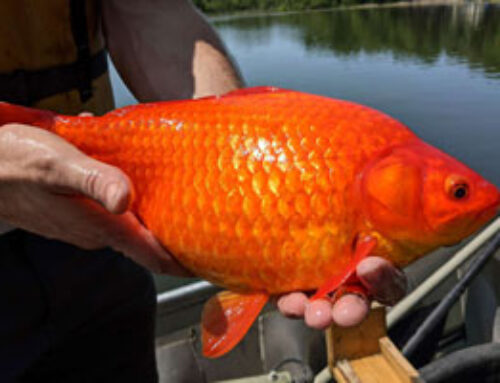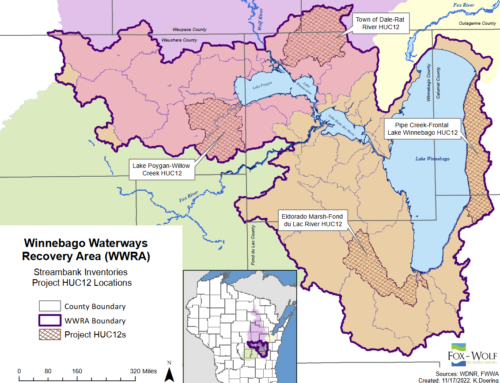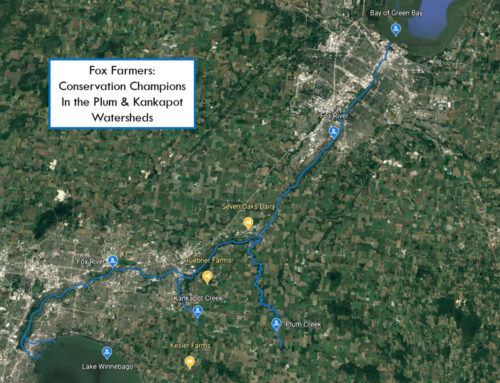Article written by Melanie Kalmerton, Fond du Lac County Land & Water
Spring is an exceptionally busy time of year on the farm. For farmers who plant cover crops that survive the winter and grow in spring, terminating the cover crop in spring is added to the already too long to do list before planting their crop for the year. Mother Nature’s spring weather can be unkind and it becomes hard to get in the field early enough to properly kill the cover crop before it is time to plant. Some farmers are interested in exploring methods that keep a living root in their soil as long as possible for ground cover, moisture retention, and other reasons.
“Planting green” is the practice of planting your primary crop directly into a living cover crop field in spring, prior to killing it. Instead of terminating the cover crop before planting, you terminate it after the field has been planted.
So, if you are interested in trying rye or other over-wintering cover crops, but aren’t sure how you’ll fit in terminating the cover before planting, if you are worried about timeliness of getting into the field with less than ideal spring weather, or just like the idea of a living root in your soil for as long as possible, you could consider the practice of “planting green”.
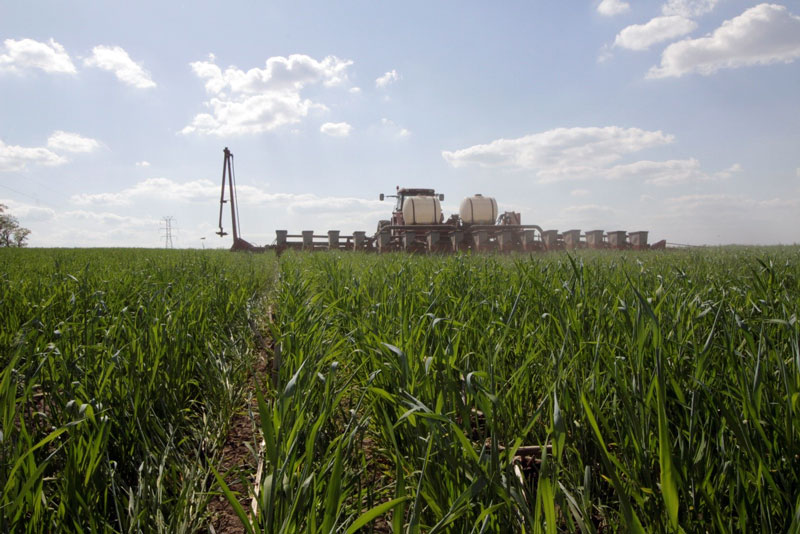
Chris Pollack, a dairy farmer in Ripon Wisconsin, shares his experience with planting green in 2021.
Chris’s experience with planting green actually starts in fall of 2020 when he planted a rye and wheat cover crop at approximately 70 pounds to the acre on a 30-acre cornfield. His first bit of advice is that he would not plant rye and wheat together again if planning to plant green and terminate using a roller crimper. The rye and wheat do not pollinate at the same time, and are not both at the proper termination stage for crimping at the same time. He had an uneven kill trying to crimp a wheat/rye combination field.
On May 17, 2021, Chris planted soybeans with his corn planter into the 30-acre living rye and wheat cover crop. He planted at 130,000 seeds/acre population. He experimented with different spacing, planting half his field at 15” spacing and the other half at 30” spacing. He usually plants beans at 15” for quicker ground cover and moisture retention instead of 30”, but will utilize 30” spacing when no-till planting into corn stubble.
Since planting green was a new practice for Chris, he wanted to trial 15 and 30 inch spacing to see if one was preferred over the other. In fact, he struggled with weed control in the 30” spacing. He thinks the reason for this was a combination of the wider spacing and the roller crimp not being as effective as he would have liked. The 15” spacing ended up having better weed control, a better yield, a quicker canopy, and better moisture. Moving forward he will use the 15” spacing. He’s also considering trialing planting soybeans green into living cover using his grain drill for a 7 ½” spacing for comparison against the 15” spacing.

Following planting green, Chris took to the field with a roller crimper to terminate the rye and wheat. Because of the previously mentioned issues with this termination method, Chris followed up shortly after with an herbicide application, effectively terminating the cover crop. In talking about the roller crimper, another thing Chris mentioned was that in chopped corn ground, there are sometimes dips in-between the cornrows and the cover crop growing in the dips was not crimped well enough to kill it.
This was an issue independent of his issue with the rye and wheat not being at the same growth stage at the same time. This will be another thing to figure out as he works on finding the best methods for planting green and follow up termination.
In 2022, Chris plans to examine how his fields look in the spring before determining what strategy he might utilize going forward. He might use his cultimulcher instead of a roller crimper. His goal using the cultimulcher would not be to crimp, or kill, the cover crop, but rather to flatten the living cover crop by knocking it down with the cultimulcher. Then he would follow up with an herbicide application shortly after planting.
Chris notes that because he planted green, there is still a considerable amount of rye and wheat straw leftover going into this winter. That mat of cover provides a nice blanket of protection going into the winter months.
Chris Pollack is a part of the Upper-Fox Wolf Demonstration Farms Network. As a part of the demo network, Chris is demonstrating the effectiveness and adaptability of conservation practices to determine the economic and environmental benefits of them in our local region.
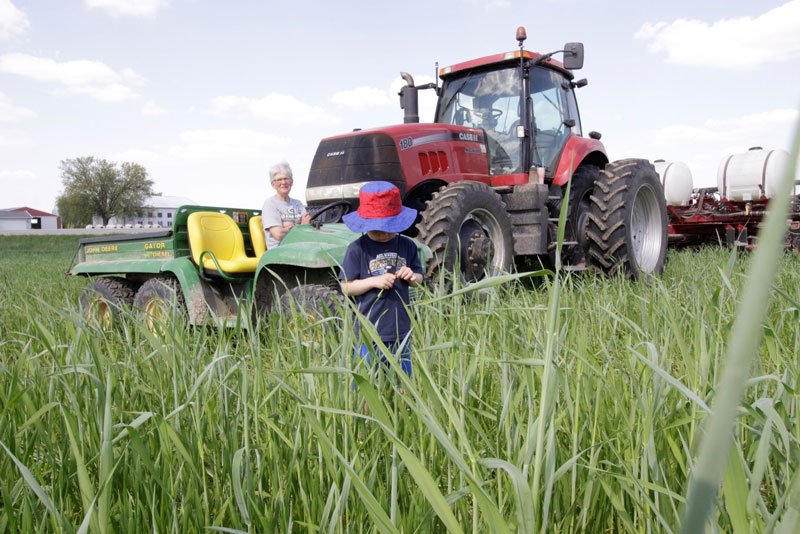
Questions? Contact us:
Climate Smart Agriculture Project Manager: Katie Woodrow, 920.915.5767 or katie@fwwa.org
To receive periodic updates on these projects as well as many others, please subscribe to our newsletters: CLICK HERE

